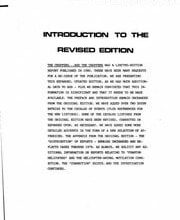Unveiling the Hidden Ledger: The Legal Financial Structure Behind the UAP Legacy Program and Its Covert Operations
Understanding the Regulations Behind Financial Reporting and the UAP Legacy Program
In a world obsessed with transparency, the intricate web of regulations surrounding financial reporting often raises more questions than answers—especially when it comes to covert operations like the Unidentified Aerial Phenomena (UAP) Legacy Program. Today, we’ll take a closer look at the legal and financial frameworks that seemingly allow these operations to maintain a shroud of secrecy, leaving both relevant authorities and the American public in the dark.
Historical Context
If you’ve been following this topic, you might already be familiar with some key incidents, such as the strange footnote disclosure associated with SAIC and Leidos under a Department of Justice antitrust investigation, and audits of contracts at Oak Ridge National Laboratory. For those who want to dive deeper, links to previous discussions are available below.
Before we venture further, I want to give a big shout-out to Catherine Austin Fitts’s Solari Reports, which have been invaluable in my research. Her website, missingmoney.solari.com, is a treasure trove for anyone interested in understanding black budget programs operating both in the government and private sectors.
The Regulatory Framework for Non-Disclosure
Let’s begin by addressing a critical question: What laws govern the non-disclosure of national security information, such as UAP reverse engineering programs, within financial reporting and corporate communications?
The SEC Act of 1934: Section 13(b)(3)(A) Exemption
The Securities Exchange Act of 1934, commonly known as the SEC Act, paved the way for the formation of the Securities and Exchange Commission (SEC) during the turbulent years following the Great Depression. While many recognize the act for its broad regulatory impact, few are aware of specific exemptions—particularly Section 13(b)(3)(A). This provision grants the President or heads of Executive Branch agencies the power to exempt companies from key legal obligations regarding accurate financial records, especially when national security is at stake.
This exemption effectively marks the dawn of legal non-disclosure concerning highly classified operations.
The Code of Federal Regulations (CFR)
The CFR houses numerous rules impacting federal agency operations. Titles 10 and 50 govern activities related to the Department of Defense and the Intelligence Community, respectively. But among the lesser-discussed realms is Title 17, which establishes the groundwork for financial reporting through the SEC.
Notably, 17 CFR 240.0-6, established in May 1968, stipulates that sensitive information classified for national security cannot be included in documents filed with the SEC or any securities exchange. In effect, companies can sidestep traditional reporting requirements if information is deemed detrimental to national defense.
Executive Order 12333
Signed by President Ronald Reagan in 1981, Executive Order 12333 addresses intelligence community activities. It allows intelligence agencies the leeway to contract with private firms without revealing sponsorship, further increasing the potential for non-disclosure. This framework facilitates partnerships where classified information remains hidden from federal oversight.
A Look Back: Key Milestones
Fast forward to the aftermath of the 9/11 terrorist attacks, when President George Bush appointed John Negroponte as the first Director of National Intelligence. In 2006, Bush delegated significant powers to Negroponte, enabling him to exempt companies from financial reporting obligations, a first in U.S. governmental history.
The First DoD Audit in 2017
In December 2017, the Department of Defense (DoD) began its first-ever independent audit, coinciding with a New York Times article unveiling the now-famous UAP videos. This monumental audit highlighted ongoing issues of financial mismanagement, revealing a staggering amount of unaccounted transactions. Future audits would continue to uncover similar inadequacies in accountability within the DoD.
The Fallout and FASAB 56
The DoD audit results prompted the creation of FASAB 56, a set of guidelines that permits federal entities to modify financial disclosures to prevent the release of classified information. This ruling grants broad discretion to organizations when reporting on classified activities, essentially allowing operations to maintain two sets of financial records—one classified and one unclassified.
The Irony of Non-Disclosure
It’s intriguing that despite the push for transparency, the regulatory landscape allows for such extensive confidentiality, especially when tax dollars are involved. As President Dwight Eisenhower aptly warned, “Only an alert and knowledgeable citizenry can compel the proper meshing of our huge industrial and military machinery of defense with our peaceful methods and goals.”
In conclusion, the framework of regulations allows companies involved in sensitive operations to operate without full accountability, raising concerns about how taxpayer money is spent and the oversight of classified programs. As discussions about UAP disclosure continue to unfold, it’s vital for citizens to remain informed and engaged in these crucial conversations regarding government transparency and accountability.
Continued Engagement
I appreciate your attention to this important topic. I hope it spurs further discussions on UAP disclosure, government financial accountability, and rebuilding trust in our institutions.
For additional insights on this subject and more, please explore the links to previous posts below. Your thoughts and comments are welcome as we navigate these complex issues together.




